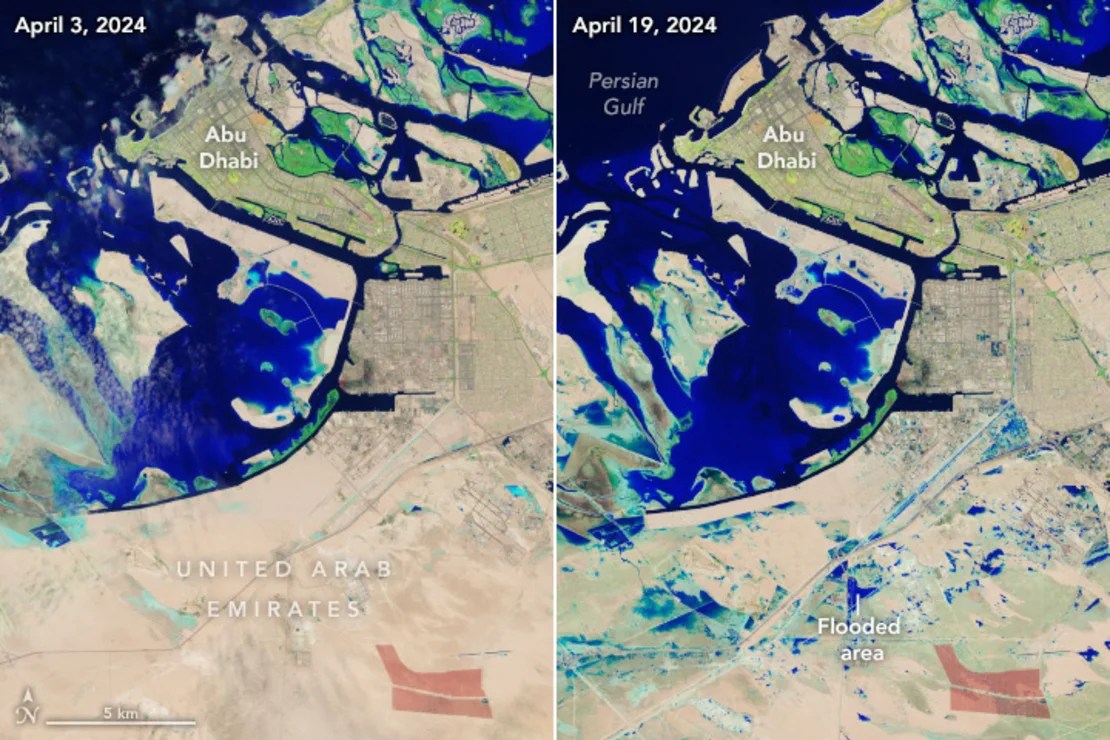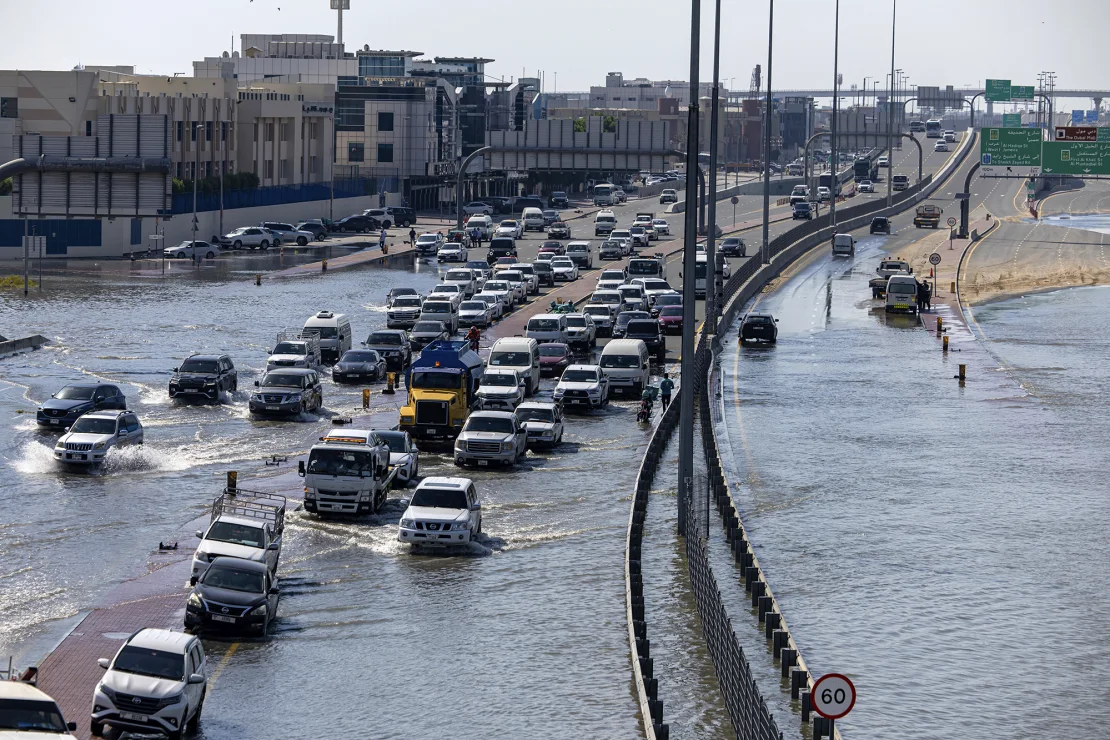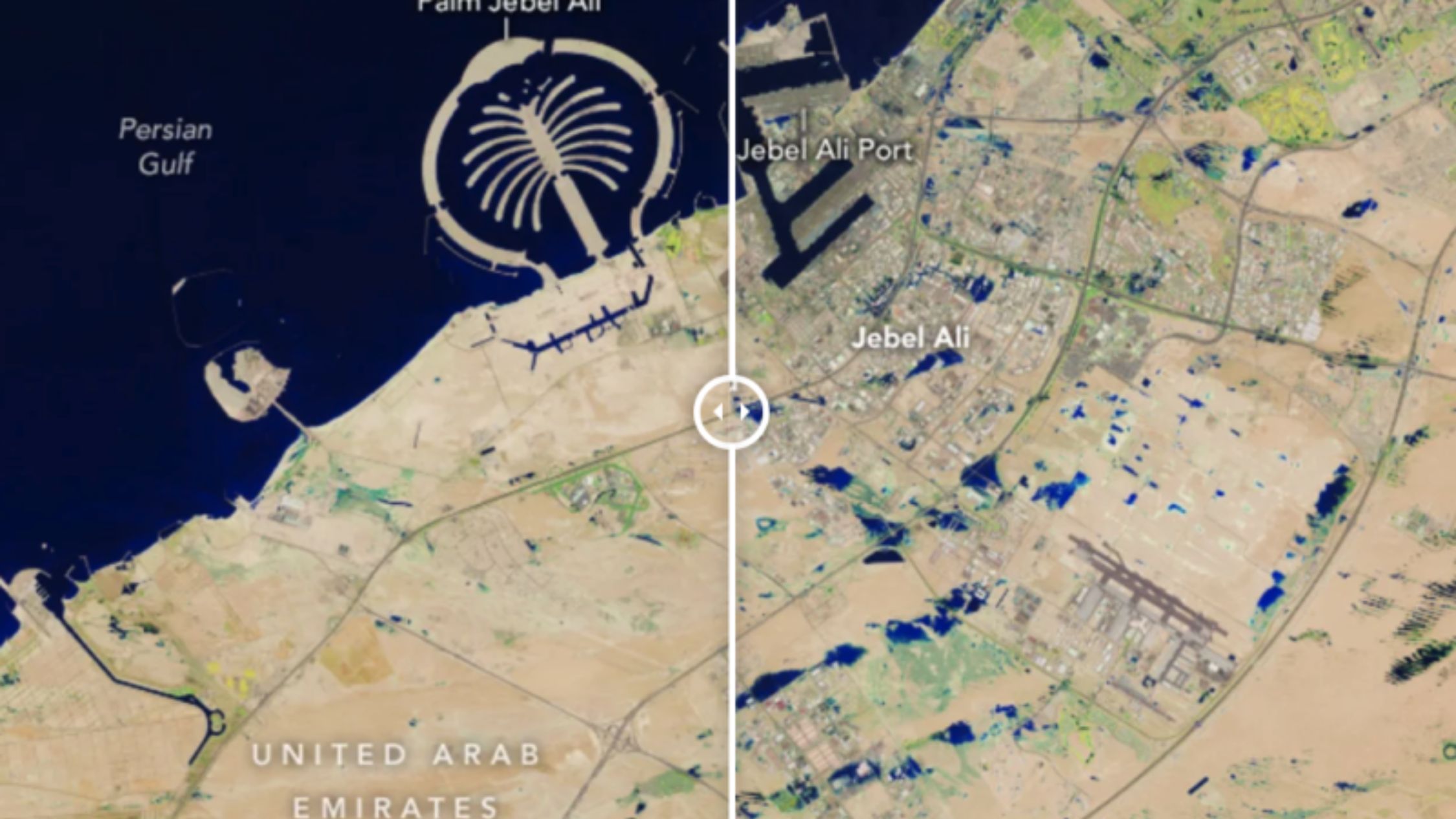(CNN) — Last week, unprecedented heavy rain left parts of the United Arab Emirates (UAE) under water, bringing life to a standstill in Dubai and elsewhere.
The flooding was the worst ever recorded in the UAE satellites Even after the clouds cleared and the last raindrops fell, they continued to be seen from space days.
From late Tuesday, April 16 to Wednesday, April 17, heavy rains lashed most of the UAE. In Dubai, the country's most populous city, a year's worth of rain fell in just 12 hours, while in the eastern parts, nearly two years' worth of rain fell in less than 24 hours.
The heaviest rainfall was reported in the north and east of the country's capital, Abu Dhabi. Between 100 and 200 millimeters of rain was recorded, but in some places as much as 250 mm.
The water rose rapidly and took time to recede as a result of this historic flood, the most intense in the country since records began 75 years ago.
Less than two days after the rains subsided, the Landsat 9 satellite flew over the United Arab Emirates on Friday, April 19, and captured images of large pools of water still lingering. The satellite collects detailed images of the Earth's surface and is operated by NASA and the United States Geological Survey.
The deep blue puddles in the images show flood water, which contrasts with the region's dry, pale brown soil. The flood shown is in the southern part of Dubai, but the more urbanized city center is not captured.
These images, taken with Landsat 9 false color products, highlight the presence of water in dry soils. The colors displayed are not exactly what a person would see from space, but they make it easier to spot differences on the ground.
The satellite also captured significant flooding in Abu Dhabi. Small, shallow bodies of water appear light blue. The largest and deepest puddles are dark blue.
Large areas of dry, parched land also turn pale green after rain. This probably allowed the soil in many areas to retain moisture from the rain, even if they were not completely flooded.

Satellite images of Abu Dhabi before (left) and after (right) the historic floods. (Credit: NASA)
While these images don't capture the nation's worst flooding, they provide an incredible snapshot of just how much the storm left behind.
The rain was associated with a large storm system that crossed the Arabian Peninsula and moved through the Gulf of Oman last week. The same system also caused deadly floods Near Oman.
As the atmosphere warms due to man-made climate change, this type of extreme precipitation becomes more frequent. A hot atmosphere is capable Absorbs more moisture Like a piece of cloth, and then eject it in the form of a shower.
Arid areas that do not have the infrastructure to cope with heavy rainfall are more likely to experience severe flooding.

Many vehicles are running in flood waters caused by heavy rains in Dubai on Thursday. (Credit: Christopher Pike/AP)


:quality(85)/cloudfront-us-east-1.images.arcpublishing.com/infobae/BH6NLAQGXJGADFWTENBUV7Z7RQ.jpg)
:quality(85)/cloudfront-us-east-1.images.arcpublishing.com/infobae/3GK63ATFOMFAYNUAQKUL4WUJFM.jpg)

:quality(85)/cloudfront-us-east-1.images.arcpublishing.com/infobae/SJ35ZLSJ5NB4BWVRJPSK74P7AQ.jpg)